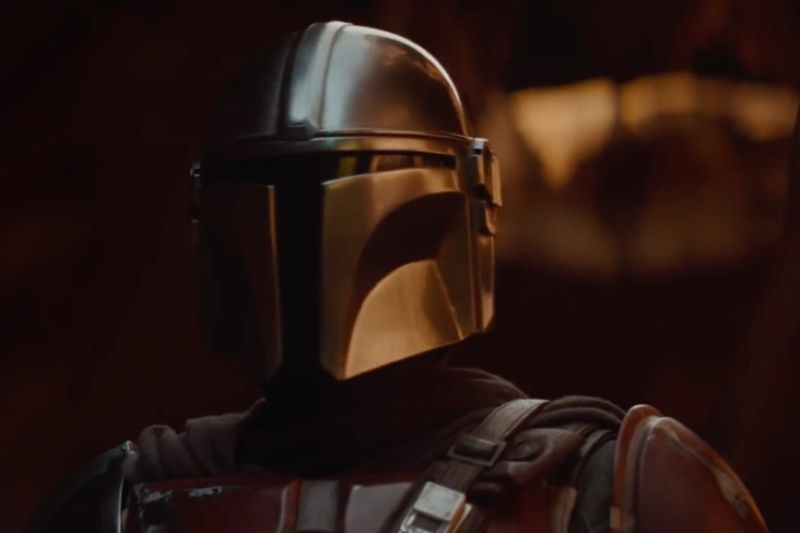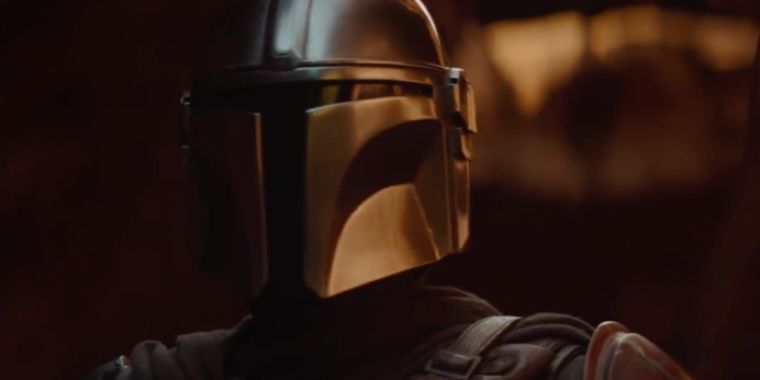
High Dynamic Range (HDR) is the most notable new display technology for rich-media consumption since high definition, but judging from some implementations of it, you wouldn't necessarily know it.
YouTube channel HDTVTest is known for doing quality analysis of the HDR implementations in popular media like films, games, and TV shows, and it found that Disney+'s The Mandalorian live-action Star Wars series is the latest in a long line of high-profile content that is just SDR wrapped up in an HDR package. The show has none of the actual benefits of HDR and a number of additional downsides, such that viewers might actually prefer to disable HDR on their TVs when viewing.Most good TVs that support HDR are capable of displaying specular highlights at around 800-1,200 cd/m² in brightness, and that range of brightness from black (or close-enough to it on LCD displays) is what makes HDR possible. By presenting such a wide range of brightness, content has realistic and visually arresting contrast between the brightest and darkest parts of the image—and that range and granularity in brightness has a big impact on color, too.
In what has become a common test for assessing HDR implementation, HDTVTest measured the luminance of every part of the screen and heat-mapped the image for the YouTube video to make it clear how bright each part of the image is even if you're not watching the analysis video on an HDR display. The test found that at no point did any part of the image in The Mandalorian—even highlights like blaster fire, a forge of molten metal, or the Sun—appear at more than 200 cd/m². That's not only not HDR—that's lower than a lot of SDR content.
-
In this image of the helmet, we're hanging at or below 100 cd/m2 for the most part. You might think that's OK since it's just his helmet in a dark place, but...
-
These are burning-hot flames in a Mandalorian armor forge. They peak at around 200 nits, far below what HDR TVs are capable of.
-
The problem is especially apparent in this image, which shows a sunlit sky and blaster fire, again hard capped at around 200 cd/m².
The channel determines that Disney has simply put the SDR content in an HDR wrapper, with associated HDR-10 or Dolby Vision flags for the TV enabled regardless. The result is that users expect to be watching it in HDR, but they're not really, and they don't have a good way (outside of watching this video) to know what's up besides the fact that the image looks awfully dim and isn't living up to expectations.
Further, this has ramifications beyond image quality. When an HDR-capable TV gets that flag to display HDR content, it may use considerably more power than if it's in SDR mode—especially if it's an LCD TV with a backlight that has to be amped up to allow high-brightness highlights. This can affect the lifespan of the TV for some TV technologies, and it will definitely affect power draw and environmental impact in others.
Disney is hardly alone here. Numerous other films, including expensive UltraHD Blu-ray releases, have been found fudging HDR, and it's common in games as well. Game-tech-analyzers Digital Foundry used the same luminance-mapping method to illustrate that even massive-budget, technological powerhouse game Red Dead Redemption 2 employed fake HDR at launch. RDR2 was later patched with proper support, but other games like Fallout 76 and Monster Hunter World continue to use fake HDR that so badly represents the image that players would be better off disabling HDR when playing.
Fake HDR is also employed by Apple in its Apple TV 4K box. To be clear, that box is fully capable of displaying full-fledged HDR when the content is right for it. But to avoid repeatedly switching between SDR and HDR modes as users browse among different streaming apps and content, by default Apple wraps all the SDR content up in a faux HDR presentation and keeps the TV in HDR mode all the time. After some users complained, Apple updated the Apple TV 4K to allow users to opt out of that feature.It's a frustrating state of affairs for the roughly one-third of Americans who have invested in HDR TVs; they often can't tell what they're getting when they acquire new content to watch or play. And it's bad for the industry, too, as it may lead some consumers who otherwise would invest in the technology to conclude that HDR isn't that big a deal when they keep seeing underwhelming, fake HDR content presented as the real deal.
"I think it will give people a really bad HDR experience," said HDTVTest's host in the Mandolorian test video, "And they may be disillusioned about HDR, because proper HDR is truly transformative."
HDR can be expensive and technically challenging to implement, and it requires specialized staff (either in-house or contracted studios) to get good results. But content companies like Disney and Rockstar Games can afford it. This probably isn't the last video we'll see that's critical of HDR implementation, but the more consumers talk about it, the more content creators who can afford it will see reason to prioritize it.
https://news.google.com/__i/rss/rd/articles/CBMidWh0dHBzOi8vYXJzdGVjaG5pY2EuY29tL2dhZGdldHMvMjAxOS8xMS9kaXNuZXlzLXRoZS1tYW5kYWxvcmlhbi1qb2lucy1hLWxvbmctbGlzdC1vZi1mYWtlLWhkci1jb250ZW50LWFuYWx5c2lzLWZpbmRzL9IBAA?oc=5
2019-11-26 21:06:00Z
52780445803787
Bagikan Berita Ini















0 Response to "Disney+'s The Mandalorian joins a long list of fake HDR content, analysis finds - Ars Technica"
Post a Comment